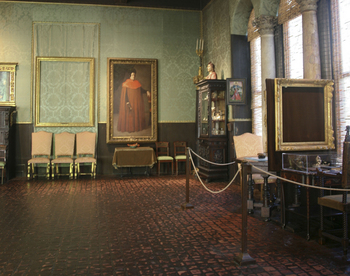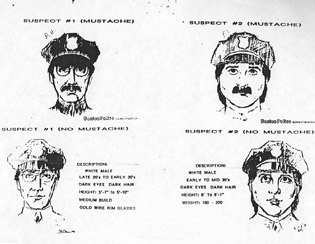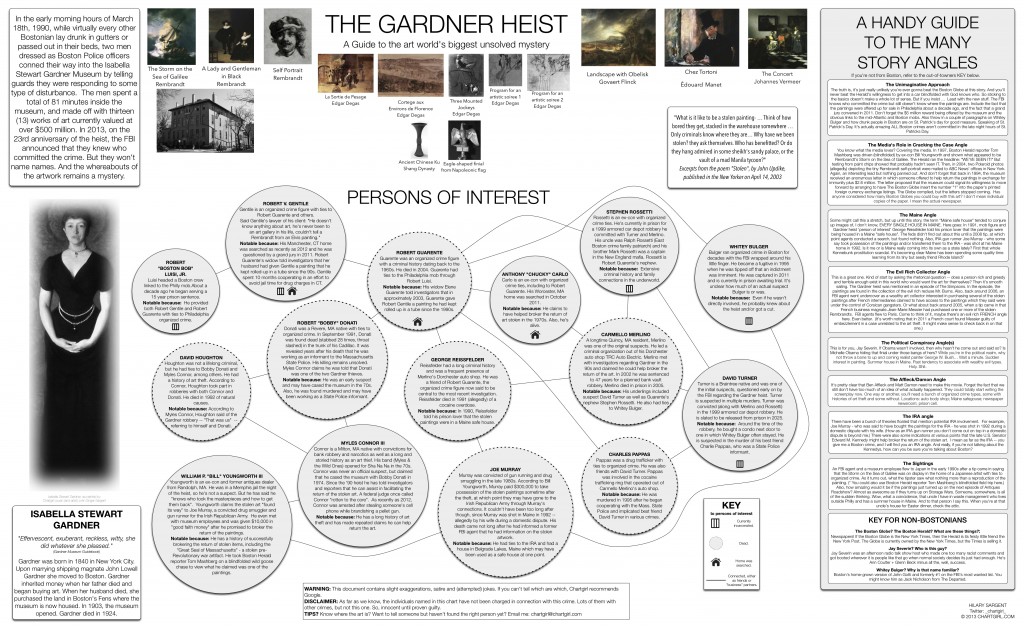UPDATE 3/17/2015: The Boston FBI claims they know who pulled the job off, but they are deceased:
“We have a high degree of confidence that we know who did this,” said Pete Kowenhoven of the FBI in Boston.
Kowenhoven says the two suspects are now dead. “Two individuals that dressed up like the Boston Police officers are deceased,” he said.
I visited the Isabella Stewart Gardner Musuem for the first time today and started to dig into the theft that happened there on March 18, 1990. It is the largest art theft in history — involving 11 paintings, including 2 Rembrandts — and it is estimated that the stolen works could be worth $300 million.
During my visit I came across the area in the picture above, which has an empty frame that contained the Rembrandt painting "Storm on the Sea of Galilee" before it was stolen. It really stuck me how much the theft still hangs over the musuem.
Background on the Isabella Stewart Gardner Museum
The Gardner is different from any musuem I've ever been in as it is built as a Venetian palace — complete with courtyard — with art dispersed throughout. Here's some background from Wikipedia:
The Famous 1990 Heist
The OpenCase has some details on the crime including images of the pieces that were taken:
The Stolen Paintings
Here's a set showing the paintings that were stolen. There were a couple of other items also stolen including a bronze eagle on a Napoleonic battle flag and a Chinese beaker from the Shang Dynasty.
The Investigation
The investigation is over 20 years old now and it is estimated the between the Boston Police and the FBI that over $20 million has been spent trying to track down the theives. The statute of limitations has run out on the original theft, but people holding the stolen items, or have helped move them recently, can still be prosectuted
Boston Magazine outlines the status of the investigation:
The Boston Herald has a great interactive graphic with sketches of the suspects and what they may look like 20 years later.
Here are the original sketches:
Suspect: Myles J. Connor Jr.
Other than the infamous Whitey Bulger, Myles Connor is the most notorious and hysterical character to be suspected in the case. He is a well known art theif, calls himself The President of Rock 'n Rolln, was in the band Sha Na Na, claims to be a descendant from those coming over on the Mayflower, and is a Mensa member. He told one of his old prison cell mates that he was inspired to get into the art theft racket after seeing the movies "Topaki" and "The Thomas Crown Affair" in the 1960's.
The Herald summarizes some of Connor's connections to the case. Many feel he may have masterminded the job from prison.
A Full List of Known Suspects
Books and Movies about the Heist
The definitive book on the heist is "The Gardner Heist: The True Story of the World's Largest Unsolved Art Theft" and there is also Myles Connor Jr.'s book "The Art of the Heist"
There's also a documentary on the heist which is streaming on Netflix. Here's the trailer:


